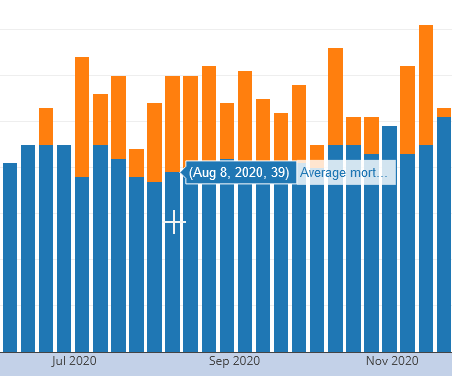Foaming frogs, super survivors, an MS trigger, and more
09 Sep 2021
Posted by Andrew Kantor
Covid vaccines 3.0?
Today’s Covid-19 vaccines are possibly the most effective in history. But you know what they’re missing? Nanotechnology. Fear not; UC San Diego researchers are on the case, developing two vaccine candidates using nanoparticles harvested from plants and bacteriophages.
The finished products look like an infectious virus so the immune system can recognize them, but they are not infectious in animals and humans. The small piece of the spike protein attached to the surface is what stimulates the body to generate an immune response against the coronavirus.
But wait! The best part is the vaccine would not require refrigeration and would be inexpensive to produce. In fact, they’re heat-tolerant enough that they could be manufactured into, say, patches that could be delivered in bulk.
(Bonus: Article includes the phrase “game changer.”)
All this has happened before….
Young adults who use cannabis have a higher risk of heart attack — that’s the story in USA Today this week based on a new study.
That study came out of the University of Toronto, and should not be confused with the 2019 study that found … the same thing. It was big news at the time.
And neither should be confused with the 2014 study from NIH, “Is recent cannabis use associated with acute coronary syndromes?” or the other 2014 paper, “Cannabis use: signal of increasing risk of serious cardiovascular disorders“.
An excess-death dashboard
How many deaths has Covid-19 really caused? While it’s directly killed at least 650,000+ in the U.S. (and 20,000+ in Georgia), that’s not the actual toll because there are deaths indirectly caused by the pandemic. For example, someone who can’t get into an ICU due to overcrowding.
A Rice University researcher has created a dashboard that shows that data. He took the average death toll for 12 conditions (from diabetes to heart failure to sepsis) in every state from 2015-2019 and compared that to the actual death toll from those conditions in 2020 and 2021.
For example, on August 8*, 2020, there were 60 reported deaths from diabetes in Georgia — but the average for that date is 39. And through the entire pandemic it’s much higher.

When you count up the number of people who died between January 04 2020 and August 14 2021 whose deaths were attributed to diabetes in Georgia you would expect to see 3839 total deaths in the months since the pandemic began. This average number of deaths is shown in blue.
Instead, we see 4627 total deaths. This means we have not explained why 788 more people died than than would have been expected in ‘normal’ times, whose deaths were attributed to these causes, in these places. This ‘excess’ number of deaths is shown in orange.
* Chosen simply because it’s my birthday.
The different causes of lung cancer
Sometimes non-smokers get lung cancer. And that, NIH researchers realized, could be a key to understanding how it develops and how it might be treated.
In fact, they discovered not only several new subtypes of cancer, but — by examining tumors’ mutational signatures — that they have mutations caused by different natural processes. And that’s important information for treatment.
“What we’re seeing is that there are different subtypes of lung cancer in never smokers that have distinct molecular characteristics and evolutionary processes. In the future we may be able to have different treatments based on these subtypes.”
The infection-MS connection
Multiple sclerosis may be caused by infections in adolescence — that’s the finding by researchers in Sweden who looked at the health records of more than 4,000 people diagnosed with MS.
Looking closer, they found that serious infections in teenagers raised the risk of MS considerably.
We found that most infections before age 11 were not associated with a later MS diagnosis. In contrast, infections diagnosed in a hospital (indicating they are relatively severe) between ages 11 and 19 were consistently associated with a raised risk of developing MS.
In particular, CNS infections had the biggest risk, along with respiratory infections, which increased the risk by 51%.
Superpowered survivors
If you were infected with SARS-CoV-2 and also got an mRNA vaccine, there’s a good chance you have ‘super immunity.’ You’re protected against more than just the original Covid-19 variant.
“One could reasonably predict that these people will be quite well protected against most — and perhaps all of — the SARS-CoV-2 variants that we are likely to see in the foreseeable future.”
Oh, and not just the CoV viruses, but other coronaviruses as well: “I would also suspect that they would have some degree of protection against the SARS-like viruses that have yet to infect humans.”
Froggy went a foamin’
Scorpion venom, caterpillar fungus, so why not … frog foam? Frog foam, for those of you who said, “Huh?” is apparently a coating on eggs that prevents them from drying out “while also offering protection from predators, extreme temperatures, and damage from ultraviolet rays and harmful bacteria.”
It also — found Scottish researchers — can be used to deliver drugs via the skin. And it seems to do that better than “industrial” foams used today, because it’s gentler, releases drugs more steadily, and doesn’t degrade as quickly.
The team also loaded the foam with the common antibiotic rifamycin, which was released over the course of a week […] Roughly half the antibiotic was delivered in the first 24 hours, but the slow release that followed over the next six days was longer and steadier than existing pharmaceutical foams.


